Symbolism of the Trunk and Tusk
The trunk is a novel instrument. With its help, Ganesha removes the obstacles from the path of the aspirant. Its orientation towards the left, the right or centre is symbolic in connection with the three principle subtle energetic channels: Ida Nadi, Pingala Nadi and, respectively, Sushumna Nadi. When it is raised to the sky, it signifies the ascension and stability of Kundalini at the level of Sahashrara. In the tantra tradition, the trunk and sensuous mouth of the elephant are connected to the masculine and feminine sexual organs.
The curved trunk also symbolizes the primordial cosmic sound of OM.The well grown trunk of His form represents a well develop intellect and wisdom. Ganesha’s tusk is a symbol of Unity.
Left Side Turned Trunk
In Lord Ganesha, generally trunk is towards his left side accessing a laddu (sweet ball). What does it symbolize? It represents moon and the cool power of ida nadi in our psychic body. This Ganesha helps us to access the fruit of our work in the material world and he also gives the fruits to us very easily with his trunk!
The Lord likes laddus and he gives material comforts (symbolized by laddus) to his devotees. The trunk of Lord Ganesha touches the laddus in the bowl indicates Lords readiness to give the boons using his trunk.
This pose of the left sided trunk in a bowl of laddus is unique form of varada (“boon giving”) gesture of Lord Ganesha. Recall our discussion at the beginning about the trunk of an elephant. Just like in an elephant, Lord Ganesha uses his trunk as a handy tool to either bless us or to give us the boons!
In other words, laddu indicates all material comforts. Since he enjoys the sweet, he will surely bestow them to you too. This why if we need to enjoy material prosperity and comforts, we need to worship and pray Lord Ganesha with left-sided trunk enjoying a sweet laddu! So, Lord Ganesha with left-sided trunk provides us bhoga (material enjoyment).
Right Side Turned Trunk
There is another pose of Lord Ganesha. It is with his trunk turned towards his right side holding a pot of nectar. What is the symbolism here? It represents Sun and the hot power of pingala nadi in our psychic body.The pot of nectar held by right-turned trunk is nothing but the bliss or the happiness obtained in samadhi state in traditional yoga. So, this Ganesha helps us achieve moksha (liberation).
According to Hinduism, the highest purpose of human life is to get liberation from infinite birth and death cycle. So, people who are interested in achieving the real goal of yoga i.e. moksha (or liberation) should pray Lord Ganesha with trunk turned to his right side.
Stories About Ganesha’s Tusk:
There are various anecdotes which explain how Ganesha broke off one of his tusks. Devotees sometimes say that his single tusk indicates his ability to overcome all forms of dualism. In India, an elephant with one tusk is sometimes called a “Ganesh”.
One story of how Ganesha broke his tusk is recounted in this excerpt from the Upodghata Pada of the Brahmanda Purana. Parashurama, the axe-wielding incarnation of Vishnu, had sucessfully defeated his enemy Kartavirya Arjuna and the kings allied with him, and so he wanted to thank Shiva for giving him the power to fight these enemies.
Parashurama went to Mount Kailash to pay his obeisances to Shiva, but Ganesha stopped him, saying his father was sleeping along with his mother, and he didn’t want Parashurama intruding on them in case they might be engaged in amorous pursuits. Parashurama was enraged that he was being prevented from seeing Shiva, and so he started fighting Ganesha. Ganesha was winning handily, but then Parashurama threw his axe at Ganesha and Ganesha didn’t fight back against it, because the axe was a gift from Shiva.
Perceiving that the axe had been given to him by his father, Ganesha became desirous of meaning it not to go in vain. Hence he received it with his left tooth (tusk). Chopped off by the axe, the tusk fell on the ground, covered with blood like a mountain that fell on the ground when struck by Indra’s thunderbolt.
Another story is as follows:
In the first part of the epic poem Mahabharata, it is written that the sage Vyasa (Vyāsa) asked Ganesha to transcribe the poem as he dictated it to him. Ganesha agreed, but only on the condition that Vyasa recite the poem uninterrupted, without pausing. The sage, in his turn, posed the condition that Ganesha would not only have to write, but would have to understand everything that he heard before writing it down. In this way, Vyasa might recuperate a bit from his continuous talking by simply reciting a difficult verse which Ganesha could not understand. The dictation began, but in the rush of writing Ganesha’s feather pen broke. He broke off a tusk and used it as a pen so that the transcription could proceed without interruption, permitting him to keep his word.
Note:
There are other stories about Ganesha losing his tusk, most famously the story included in some manuscripts of the Mahabharata concerning Ganesha breaking his own tusk off to continue writing the Mahabharata as Vyasa was dictating it to him.
Sources:
- Yoga Magazine, issue no. 23
- Rudraksha Yoga
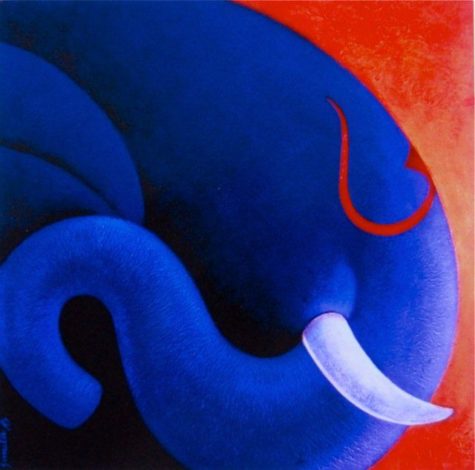
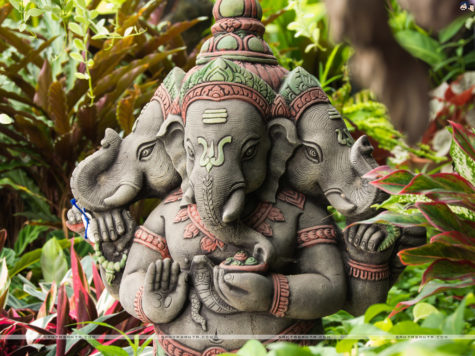
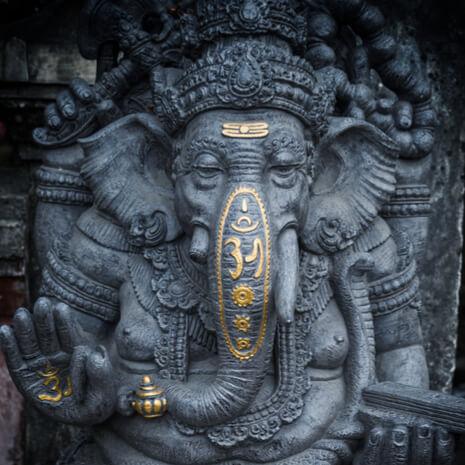
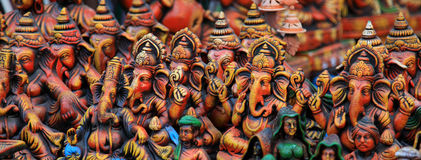
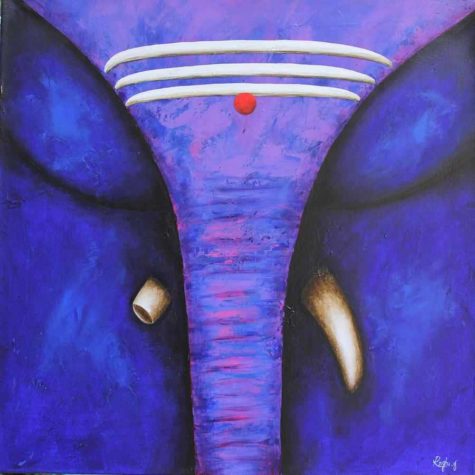

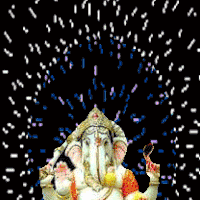
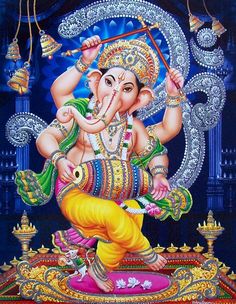
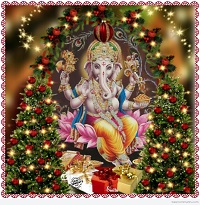
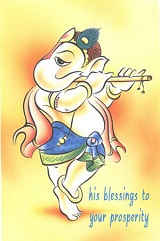
Leave a Reply